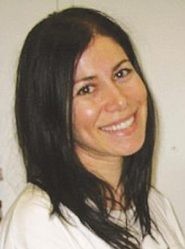Jerusalem soccer cheers, and ‘Dialogue in the Dark’
The World Cup fell during my one-week trip to Israel. Everywhere I went, crowds huddled around screens, people dropped their obligations, transported to the field as they followed the games.
On my final night in Jerusalem, as I emerged from the lobby of the Herbert Samuel Hotel, I heard echoes of cheers. Curious, I followed the roar of the crowd, and stopped in my tracks: the piazza known as Kikar haAmerikaim was jam-packed. Standing room only.
It was almost midnight. Beach chairs stood on ancient cobblestones under white umbrellas. Amber lamps bathed a huge flat-screen TV. The crowds stood shoulder to shoulder. It seemed like everyone was there, old and young, secular and religious, chasidim, visitors, foreigners, locals, united in the escapist joy of the World Cup.
On this night, the crowd was passionate. Apparently there were many British folk in attendance, because when England lost to Croatia, the disappointment was palpable. Regardless, when the game was over, the crowd was reluctant to disperse. Cigarettes were lit, and Jaffa Road was overtaken by pedestrians spilling out of the square to reenter their lives.
Meanwhile, southern Israel was burning. There was constant awareness — buses heading south in support; fundraising campaigns to purchase ice cream for the communities there — but in Jerusalem, there was a compartmentalized sense of normalcy. I tried to embrace a sense of normalcy, but not for a moment was the fear not felt.
But compartmentalizing is part of Israeli reality. There is always something happening. Somehow, people go on.
Obviously, it is not simple. The seeds of PTSD are sown. And just as I was about to leave Israel, reports of rocket alerts started coming in.
But my appreciation for the World Cup was amplified — for a month, Israel had soccer to focus on.
A highlight of my trip was a museum program I had wanted to take part in for almost 15 years. It was life-changing. For a moment in time, it gave me the experience of being in another’s shoes — difficult shoes.
“Dialogue in the Dark” is a program from Germany, showcased in the Israeli Children’s Museum in Holon, which simulates the experience of blindness.
The hour-long tour is conducted in pitch darkness. I knew this, but when the guide asked for our glasses at the beginning of the tour, I panicked. Rationally, in the dark, glasses wouldn’t help, but even before I entered the exhibit, I felt vulnerable.
We experienced a few scenes in the everyday life of a blind person, a glimpse of the challenges. You cross a street, walk a bridge, roam a market, ride a boat, order food in a cafeteria, and more — and for one hour you are in a world without color, without pictures, without anything visual, luxuries we take for granted.
When we entered the dark, I clutched the cane I had been given, tightening my grip without even realizing. Teamwork was instantaneous. We had been briefly introduced to one another before the tour, and before we knew it we were steadying ourselves with the bodies of the strangers, asking their names and thanking them.
None of us knew where we were going. We relied on our guide’s calm voice, nudging us along as he called us each by name.
After a few minutes, I relaxed — dare I say adapted? I placed the cane in front of me as a guide, something I had witnessed hundreds of times, but in the moment felt like a revelation.
Each setting was signaled by smells and sounds. On a bridge, there was the shaky bridge and the sound of water. On a boat, we heard seagulls and sniffed the salt in the breeze. At the market, pungent root vegetables permeated the air, and I marveled at my recognition of fruits and vegetables by touch: smooth eggplant, leafy greens, solid potatoes, even a quirky kohlrabi in the mix.
The final stop was at the cafeteria. Again and again, I felt the coins in my palm, comparing the smooth to the bumpy. Confidently, I handed over a five-shekel coin for my four-shekel bottle of water. “Here’s six shekel back,” the cashier said.
“But I gave you a five!”
“No,” he said. “That was a ten.”
How much trust you must need if you are blind? Anyone could pull a fast one on you, and you’d never know. It was another layer I had never given a thought.
Now came time for the “dialogue.” That grounding voice we had followed throughout the tour, the voice that brought a sense of security, the “eyes,” so to speak, for us “blind” folk on the tour, belonged to someone blind. From birth.
A truly blind man was leading us helpless sighted people. Our roles had been reversed.
Our guide, with unbelievable humility, spoke to us of his experiences. He views it as nothing more than a challenge to overcome, just like everyone has in life, he said. There was no trace of bitterness or victimhood. This young man is educated, both religiously and secularly. He is employed, he has lived with sighted roommates, he is a pianist.
He is an inspiration.
Dialogue in the Dark truly was eye-opening, I thought to myself as I walked out of the museum late at night, climbed a long staircase, and stood waiting at the bus stop. I had no clue where I was going. It would take at least two buses to find my way back.
Suddenly, approaching closer and closer was the scratchy sound of a cane. I turned and saw the guide from Dialogue in the Dark.
“Do you need help finding a bus?” he asked, and he explained which route would be best to take.
I got home safe and sound. In the dark.
Copyright Intermountain Jewish News

 49.0°,
Fair
49.0°,
Fair 




